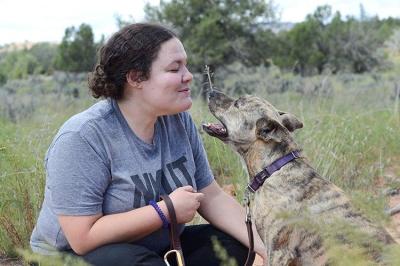
How to Teach a Dog to Speak and Be Quiet
Barking is how dogs express themselves, but it can become excessive. When you teach a dog to speak on cue, this can actually help to stop excessive barking. But before you teach a dog to speak, there’s another cue to practice: teaching your dog to be quiet or stop barking.
How to teach a dog the 'quiet' command
To teach your dog the “quiet” command, have a supply of small, yummy treats at the ready. You can teach “quiet” by rewarding the dog with a treat between barks. You want to be clear that you are rewarding the quiet, not a bark, so use a marker — a clicker or your voice saying “yes” — at the quiet moment. Start by rewarding a quiet moment, and then reward for longer and longer periods of quiet.
Add a verbal cue (“quiet,” for instance) once the dog is consistently giving you the behavior you want. If you start giving the verbal cue before the animal is doing the behavior, the dog might not associate the cue with the behavior. Instead, get the behavior first and then start giving the cue while the dog performs the behavior.
Home starts with you
Gradually move the cue back in time until you are giving the cue before the behavior. If done correctly, this is an easy way for the animal to learn that a particular cue is associated with a particular behavior. Your dog will learn that if you give the cue “quiet,” they will only be rewarded if they don’t make a sound.
How to teach a dog to 'speak'
To teach your dog to “speak” or bark on cue, it can be helpful to have another dog who knows the cue act ask as a role model. This technique can work amazingly fast if you are rewarding the “speaking” dog with treats. Stand in front of both dogs, so you can be ready to reward the “speaking” behavior from each dog.
If you do not have a role model dog who speaks, start by standing in front of your dog. Show the dog the treat, waving it close enough for the smell to be enticing.
Most dogs will then start offering any behaviors that have been rewarded in the past (e.g., sit or down). Others might wiggle and seem confused. Give the dog time to become slightly frustrated; it doesn’t take more than a minute for most dogs. If the dog makes any sound — a whine or a yip — give them a marker (a click from a clicker or a verbal “yes”) to mark that moment, and then reward the dog with a treat.
Step back and wait again. Reward for any sound for about five repetitions, and then wait for more sound. If you don’t get a bark but do have more vocalizing, continue to reward the dog. As with teaching “quiet,” get the behavior first and then start giving a cue (e.g., “speak”) while the dog performs the desired behavior. Gradually move the cue back in time until you are giving the cue before the dog barks.
Practicing dog training cues
To increase your rate of success, practice both the “speak” and “quiet” cues often, and remember to keep it fun. Talkative dogs love to interact. With that said, some dogs aren't big barkers. If your dog is not enjoying learning to speak, move on to practicing other dog training cues that both you and your dog will enjoy.
Furthermore, you must be aware not to reward your dog for barking all the time as a way of requesting treats. If you want your dog to speak on cue, reward them for speaking only when you have asked the dog to speak. Ignore any unsolicited barking by turning your body away or walking away.
